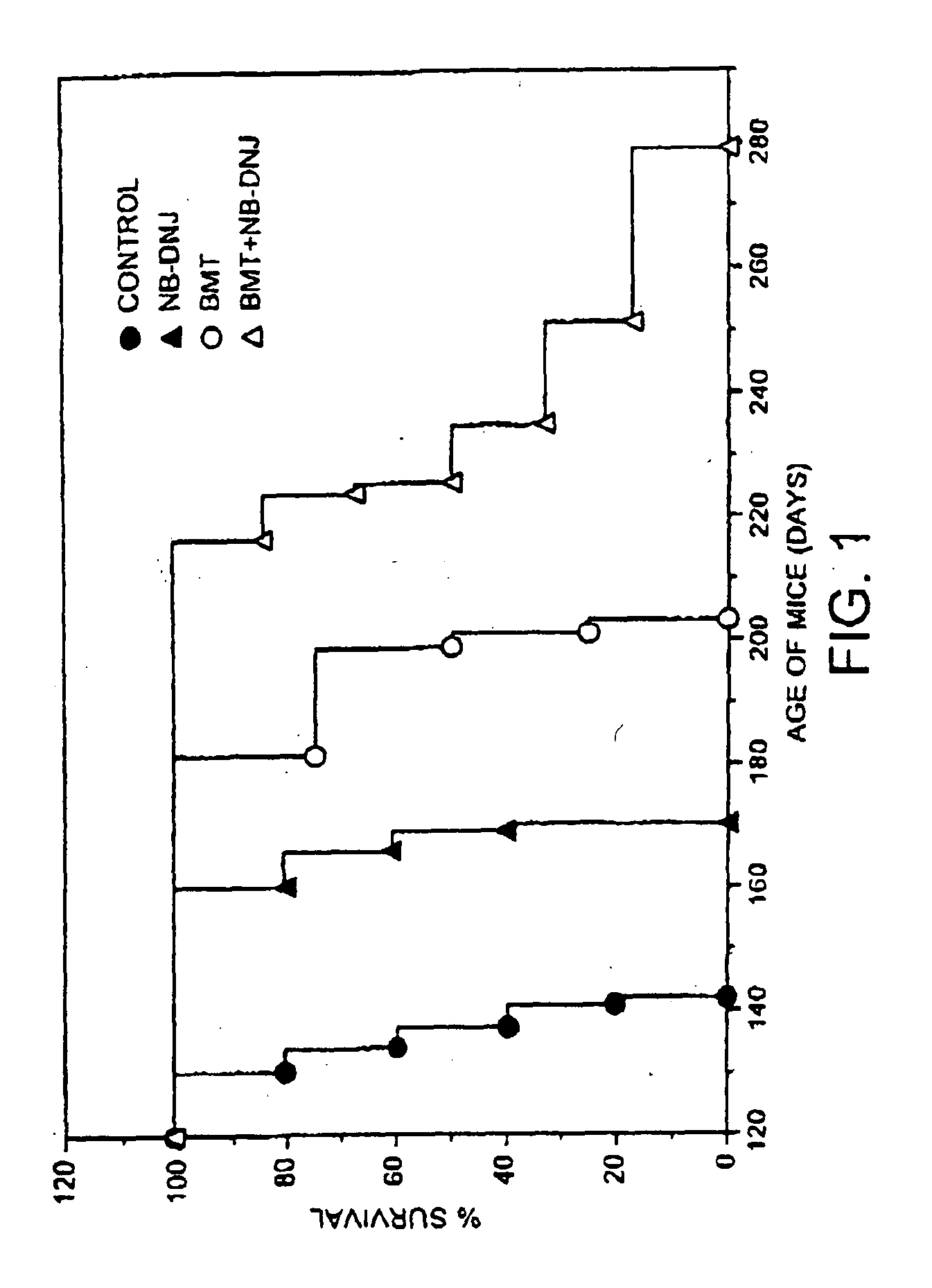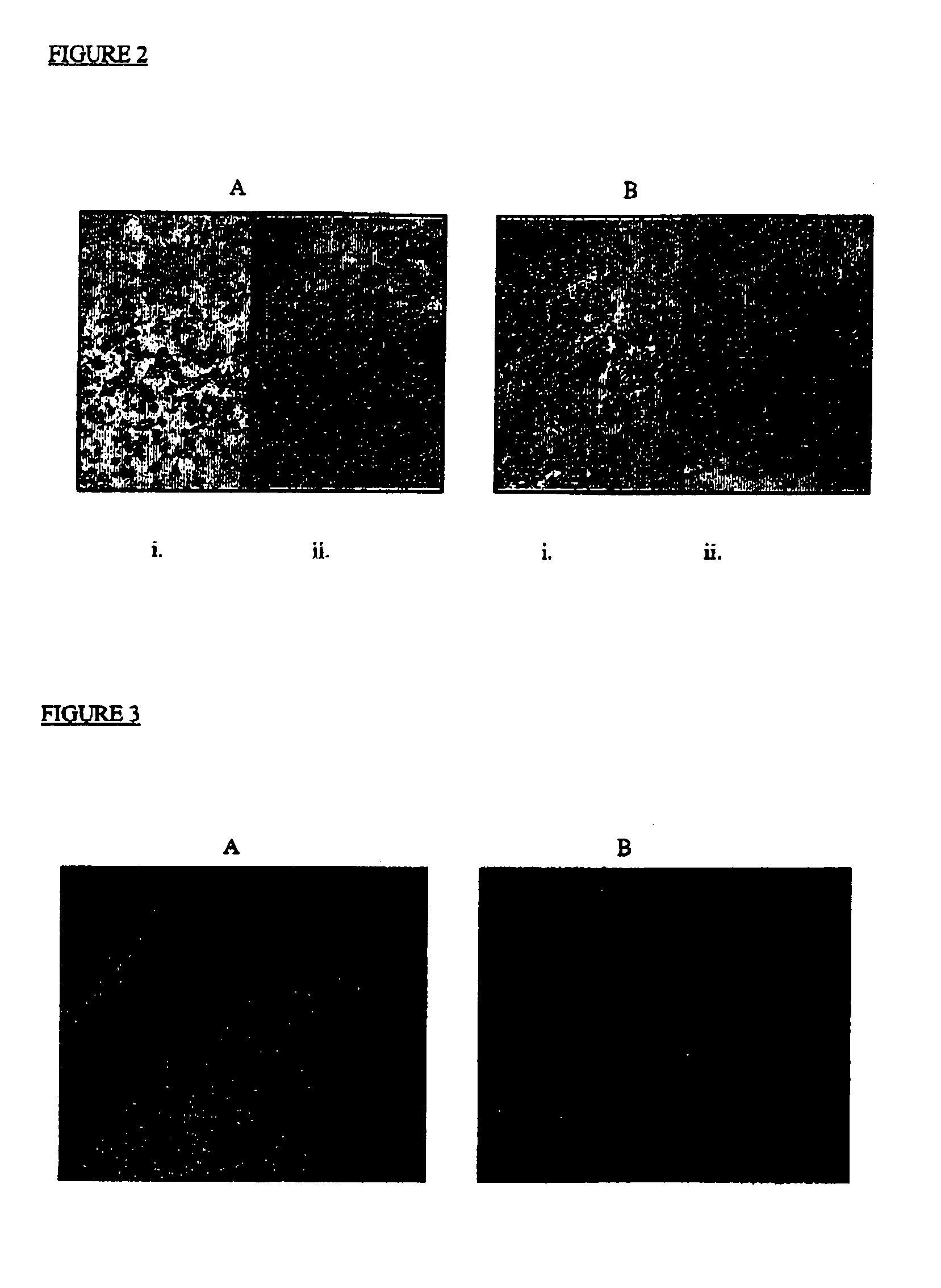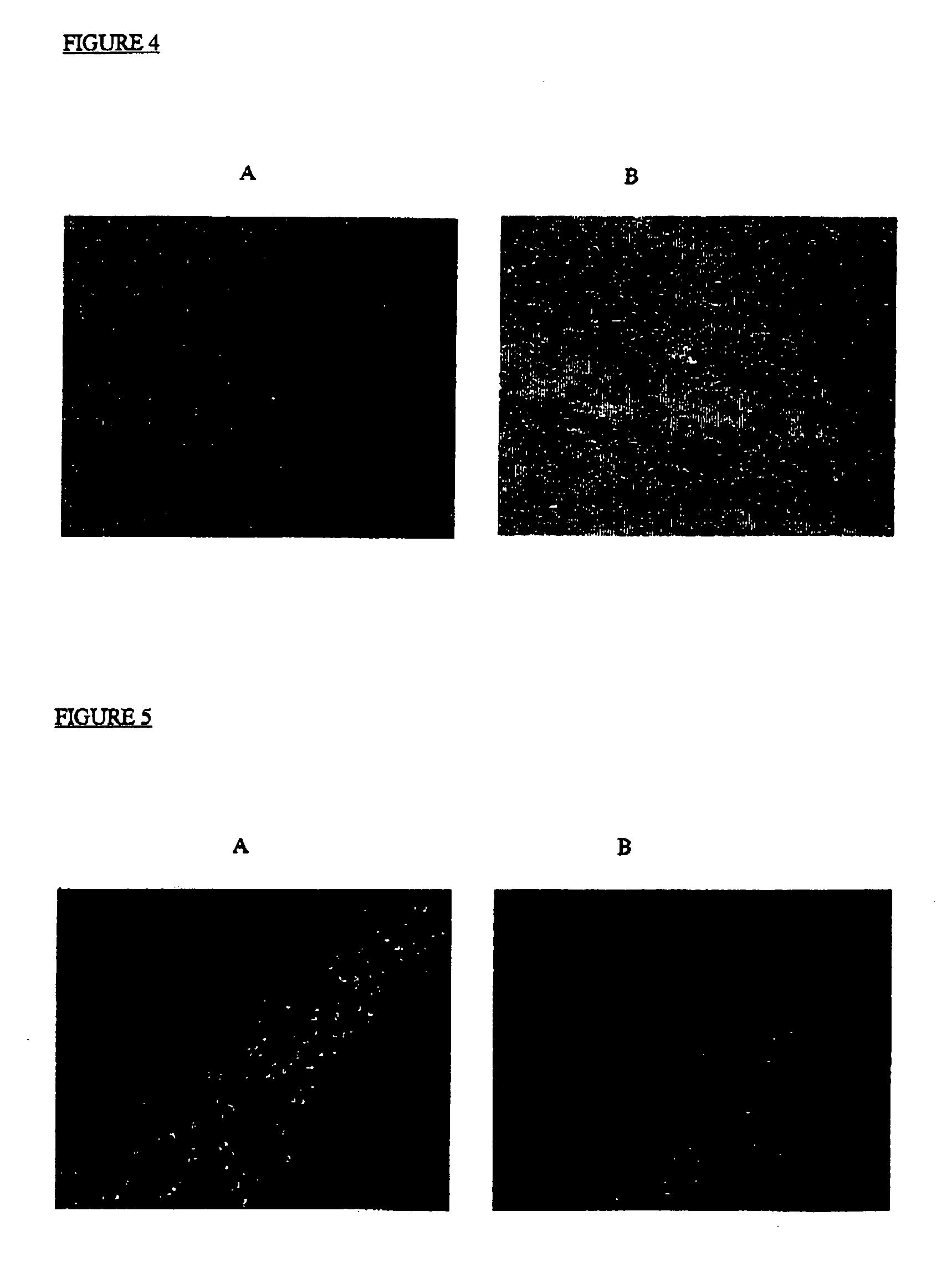Therapeutic compositions and methods of treating glycolipid storage related disorders
- Summary
- Abstract
- Description
- Claims
- Application Information
AI Technical Summary
Benefits of technology
Problems solved by technology
Method used
Image
Examples
example 1
Co-Administration of Ceredase™ and NB-DNJ
[0139] A group of mice were treated with NB-DNJ at 4800 mg / kg / day for 5 weeks. After a low intravenous dose (5-10 U / kg) of Ceredase™ (Genzyme Corporation) administered as a single injection via the tail vein, serum enzyme activity was measured by taking sequential serum samples from the tail vein to monitor enzyme activity over time. Ceredase™ is a modified form of β glucocerebrosidase. The results are shown in Table 2.
TABLE 2Effect of NB-DNJ on circulatory activity and half life of Ceredase ™MousePeak ActivityT1 / 2 (min)Control15.84.227.93.338.01.546.81.8530.01.462.82.0713.61.2817.61.2Mean ± sem11.6 ± 3.12.1 ± 0.4NB-DNJ113.91.7232.14.9324.15.3413.13.0521.03.5668.32.4719.22.8Mean ± sem27.4 ± 7.23.4 ± 0.5
[0140] Ceredase™ activity and serum half lives appeared to be increased in mice treated with NB-DNJ, suggesting a protective effect of the compound to enzyme clearance. It was concluded that (a) co-administration of NB-DNJ with Ceredase™ doe...
example 2
Co-Administration of NB-DNJ and Bone Marrow Transplantation in a Mouse Model of Sandoff Disease
[0141] Sandhoff mice were bone marrow transplanted at two weeks of age and drug therapy initiated at 9.5-11 weeks of age (600 mg / kg / day). Survival curves were plotted for each group of animals with each point on the graph representing a death (FIG. 1). The untreated (no BMT, no drug) survived (longest survivor) until 140 days (filled circles), NB-DNJ only (no BMT) survived until 170 days, BMT only (no NB-DNJ) survived until 200 days, and NB-DNJ plus BMT had extended survival from 200-280 days. The data show synergy approximately 13% above additive.
example
Inhibition of Clinical and Pathological Symptoms in a Murine Model of MPS
[0142] A murine model of MPS IIIA (Sanfilippo disease) has been described that demonstrates the disorder's characteristic joint and skeletal storage of proteoglycan fragments, and neuronal storage of GM2 and GM3 gangliosides. Colonies of mutant mice expressing the MPS IIIA phenotype have been described, and have been validated by a number of criteria as an authentic model of the disease (Stanley, P et al (1999) Glycobiology 9: 1389-1396). MPS IIIA mice display clinical signs of the disease around 6 months of age with decreased activity, scruffy coat, abdominal distention, hunched posture and waddling gait. By 12 months, the mice exhibit severe ataxia, tremors and weight loss. Death results by 18 months or less.
[0143] The brains of MPS mice are grossly normal. However, microscopic examination reveals swollen somata, meganeurite formation and enlarged axon hillock regions of cortical pyramidal neurons. White ma...
PUM
| Property | Measurement | Unit |
|---|---|---|
| Time | aaaaa | aaaaa |
| Time | aaaaa | aaaaa |
| Time | aaaaa | aaaaa |
Abstract
Description
Claims
Application Information
 Login to View More
Login to View More - R&D
- Intellectual Property
- Life Sciences
- Materials
- Tech Scout
- Unparalleled Data Quality
- Higher Quality Content
- 60% Fewer Hallucinations
Browse by: Latest US Patents, China's latest patents, Technical Efficacy Thesaurus, Application Domain, Technology Topic, Popular Technical Reports.
© 2025 PatSnap. All rights reserved.Legal|Privacy policy|Modern Slavery Act Transparency Statement|Sitemap|About US| Contact US: help@patsnap.com



